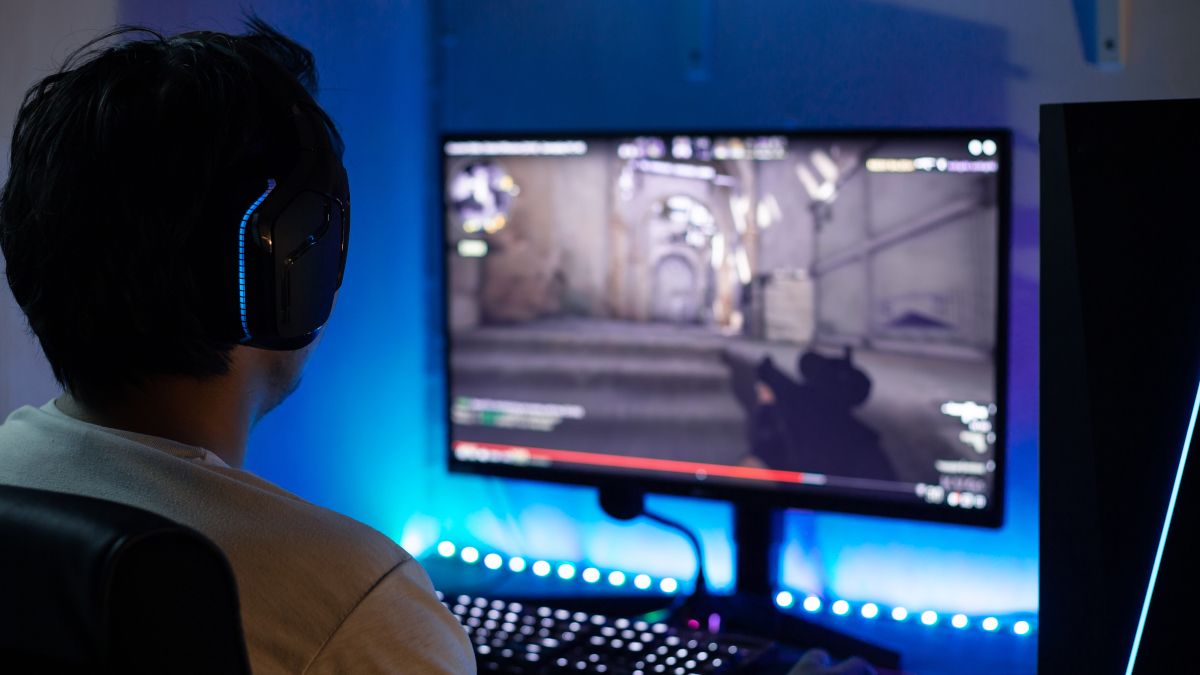Quick Links
Screen tearing is ugly, distracting, and with the latest monitors and televisions entirely avoidable. If you're looking at purchasing a new display for gaming, you should understand what screen tearing is, how it occurs, and how you can eliminate it.
Screen Tearing, Frame Rate, and Refresh Rate
Screen tearing is the name given to unsightly visual artifacts that occur mostly in video games, but could happen anywhere there is a mismatch between the actual frame rate and a display's refresh rate.
A display's refresh rate determines how many times every second that display updates. This starts at around 60Hz for most older televisions and office monitors, with higher refresh rate televisions of 120Hz and high refresh rate monitors of 144Hz and 240Hz becoming more common.
On a 60Hz screen, the monitor expects a new frame every 16.667 milliseconds. Tearing occurs when the computer or console driving the display cannot get a full frame ready in that time. This is usually a result of a dip in frame rate where the GPU is under load and frame times exceed the 16.667-millisecond cutoff.
Instead of sending a full frame, the GPU sends an incomplete frame and because the monitor expects a new frame every 16.667 milliseconds, the incomplete frame is displayed on top of the old frame. This results in a "tear" on the screen where both the old and new frames are displayed at once. If you're not sure if you've witnessed this on your own screen, YouTube channel Neon Cipher demonstrated what screen tearing looks like in a short video.
Variable Refresh Rate Eliminates Tearing
Vertical sync, or VSync, has been used by gamers for years to lock the frame rate of a game with the refresh rate of a monitor. This works but is potentially wasteful of performance and it doesn't help if you can't maintain a frame rate that matches or exceeds your monitor's refresh rate.
Enter variable refresh rate or VRR. This technology has a few different names depending on which brand you pick including FreeSync (AMD), G-SYNC (NVIDIA), and HDMI Forum VRR, but it all works in roughly the same way.
VRR adjusts the refresh rate of the monitor on the fly to match the frame rate of the GPU. This eliminates screen tearing by ensuring that the monitor waits for the next full frame before forcing a refresh. Not only does it eliminate tearing, but the feature can also be used to compensate for low frame rates by duplicating frames when necessary.
To make the most of VRR, you'll need to make sure you buy a TV or a monitor that supports the feature (and that your computer's graphics card or your console is also compatible).
Most New TVs and Monitors Now Support VRR
Most new monitors and TVs support at least some form of VRR, whether it's AMD's free-to-implement FreeSync or HDMI Forum VRR introduced as part of the upgrade to HDMI 2.1.
The Xbox Series X and S both support VRR technology, and Sony is said to be bringing the feature to PlayStation 5 in a later update. If you're buying a display for gaming, make sure you don't pass up on this essential feature. That's why all of our favorite gaming monitors and recommended gaming TVs support VRR in some form or another.


